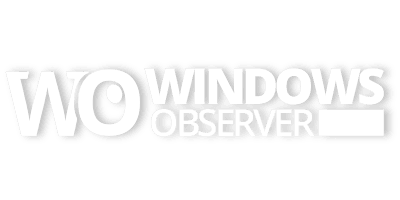Interested in providing some input on what you think would make for great additions and must have features in the next version of Windows 8?
Well here is your opportunity. Let me start by saying this is not an official Microsoft survey but a survey of readers of this site as well as others:
The participating sites include:
Demonic Talking Skull – I’M A UC BLOG – markwilson.it – msigeek – Standalone Sysadmin – Techinch – Teching It Easy: with Windows – The Experience Blog – The things that are better left unspoken – The Windows Club – WindowsObserver – WindowsPro – Within Windows – 7tutorials – 4sysops
The answers you provide are merged with those from readers of the above sites so we will get a great cross section of tech readers and enthusiasts on what those must have additions are for Windows 8.
New user interface
Android and iOS are good examples of operating systems with innovative user interface models. Even more revolutionary will be Windows 7 Phone. These examples show that OS interfaces beyond the Windows Start Menu and the Windows Taskbar are possible.
Support for different form factors
Support for different form factors, such as tablets and netbooks, includes the ability to run Windows with minimal hardware requirements and on devices with small screen sizes (as small as 5”). Optimization for touch, the ability to run Windows without mouse and keyboard, and orientation detection are other essential features.
More modularity
Linux is a good example of a modular operating system. It allows you to install only those OS components you really need. This would require a package manager that resolves software dependencies. The advantages of more modularity are lower hardware requirements, a reduced attack surface, and simplified patch management.
Third-party patch management
Third-party management would allow you to update common Windows applications of third-party vendors through Microsoft’s online update service. Linux has this feature for as long as I can remember.
Bare metal hypervisor
A bare metal hypervisor would enable you to run multiple Windows installations simultaneously on a PC. You could move your virtualized Windows installation with all applications to another PC or to a VDI environment by simply copying the virtual system drive.
Application virtualization
Virtualized applications run in an isolated environment that ensures no modifications to the OS are made during installation and at runtime. Application virtualization can solve compatibility issues and improves security.
Application streaming
Application streaming allows you to launch a Windows application from a remote server, for example, through the web, without the need to install the application manually. Application streaming solutions usually leverage application virtualization. An application streaming Windows API would enable third-party software vendors to offer Windows applications through the web.
Windows Store
Like Apple’s App Store, Windows Store would allow you to buy and download third-party applications that have been approved by Microsoft.
Windows Restore Button
If you messed up your Windows installation, this feature would enable you to restore Windows to its original state without losing your data and without the need to reinstall all your applications.
Cloud APIs
Third-party software vendors could allow you to use cloud APIs to add cloud features to their applications. For instance, a web browser vendor could store your bookmarks, plugins, and browser settings in Microsoft’s cloud or in the cloud of a third-party provider. That way, all your settings and data would automatically be available on every Windows machine you log on to.
New authentication methods
Wouldn’t it be cool if you could log on to Windows or an online service with a smile at your web cam (facial recognition), with a friendly “Hi, it’s me” (voice recognition), or by just touching your beloved PC (fingerprint recognition)? Biometrics applications have already been available for a while, but they will only have a fair chance of being adopted in the Windows ecosystem if Microsoft fully integrates these functions into Windows.
Instant-On
Instant-On means that Windows wouldn’t have to boot up when you turn on your PC. Considering that computers are becoming more and more an integral part of our daily life, this could be an interesting feature for home users in particular. It is probably a must-have feature for tablets.
Malware protection
If Windows were delivered with integrated malware protection, every PC would be protected right after the installation, which would make the whole Internet a safer place. Third-party vendors could offer services such as antivirus signatures and antivirus applications that run on top of the Windows malware scanning engine. This would also reduce notorious compatibility problems with antivirus scanning engines and would even allow you to run multiple antivirus applications at the same time.
Better UAC
Compared to Sudo in the Linux world, UAC (User Account Control) is a fairly simple security privilege solution. A UAC with more configuration options could improve security, especially in business environments.
Migration from Windows XP
Windows XP is a very popular operating system and it will still probably run on many computers even when Windows 8 is released. These Windows customers would appreciate a seamless migration from Windows XP to Windows 8.
Better compatibility
Better compatibility includes better hardware and software compatibility with legacy hardware and software.
Better security
If you think that Microsoft should focus on improving the security features of Windows 8, then you should vote for this option.
Better performance
Speed is always important. If it matters most in your environment, then you should tell Microsoft now.
Less hardware requirements
If you intend to run Windows 8 on old computers, then you need a Windows 8 which requires only minimal hardware.
Less bloat
Some people think that Windows already has too many features and would prefer a slim Windows 8.

